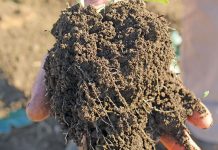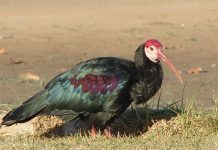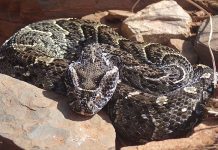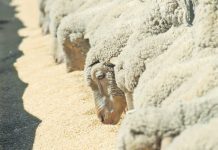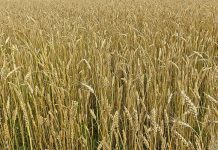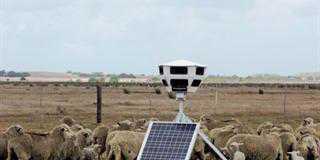Precision livestock farming uses information technology to assess fine-scale animal and physical resource variability in order to improve management strategies and optimise economical farming according to animal scientist Dr Jasper Coetzee. He was speaking at the recent 2015 Namibian Livestock Producers’ Organisation held in Windhoek.
According to Coetzee, this technology enables livestock farmers to make quicker and more accurate assessments and decisions. Speed and accuracy is vital when handling large groups of animals, as is the case with commercial sheep farming. A livestock farmer can then identify and manage individuals or selected groups of animals, thereby taking advantage of the large variations between animals in a flock. Through the use of this technology, new and improved scientific knowledge can be introduced to the farm.
“Precision livestock farming is an integrated livestock production system based on measurement, management and marketing of animals according to their individual merit,” he says. Historically, commercial sheep farmers, for example, relied on ‘group’ management, despite knowing that significant variation in performance existed between the animals.
The difficulty for farmers was the lack of practical, reliable methods to identify, measure and manage individuals in large commercial groups in order to remove poor performers and capitalise on superior performers. Modern electronic identification has changed this scenario by making it relatively easy to recognise individual animals faster and more accurately.
Meeting the rising demand
The expected increase in the world population to nine billion by 2050 affords livestock producers immense opportunities as well as challenges. “The demand for meat is expected to increase in relation to the expected increase in the per capita income in developing countries. Indications are that the demand for meat could grow by more than 70% by 2050,” Coetzee said. “To meet this demand and be able to survive the current economic climate in Southern Africa, livestock producers will be compelled to improve efficiencies on their farms.”
Growing meat production merely by increasing livestock numbers is not an option because of the limited land available for livestock farming. Production per animal and/or per hectare needs to increase. To maximise profitability, sheep farmers will have to genetically increase reproduction and production potential. Because up to 90% of this potential is determined by nutrition and management, producers must focus on these two aspects.
Profit drivers
Profit is largely determined by effective production, not price, Coetzee stresses. Research on the sheep farming practices that will be implemented up to 2050 is already underway at the University of Western Australia. “One of the university’s research objectives is to breed sheep that could be mated at eight months and produce twins that could be weaned at 12 weeks with a combined weight of 60kg,” he explains.
Nutrition constitutes as much as 58% to 67% of livestock farming input costs, but during periods of good rain it can go down to 39%. However, high input costs can be mitigated by implementating precision feeding and management practices. Precision, or focused, feeding entails supplying precise quantities of correct, high-quality supplemental feed at the right times. This calls for licks and rations custom-formulated for specific herds and flocks on specific farms.
Feed costs can, for example, be markedly reduced by using natural synchronisation of ewes through the use of high-libido teaser rams. This could result in limiting lambing seasons to as short as 28 days or even 21 days, explains Coetzee. In extensive farming areas such as Namibia, feed costs can be reduced through a scientifically designed grazing and feeding management regime. It is advisable to make use of a rangeland scientist to design a grazing system that allows for a full year’s rest of the different camps every two to five years.
“It has been proven that a proper grazing programme could result in as much as a 41% increase in meat production per hectare,” says Coetzee.
Lower labour costs
Labour represents between 18% and 24% of sheep farming input costs. This could be drastically reduced by using modern technology and management practices, such as computerised handling equipment, electronic ear tags, and electronic crushes and pens. In Australia, for example, engineers have developed technology that counts and weighs sheep at watering points.
Precision farming practices free up labour that could be utilised elsewhere on a farm.
Feedlot Precision
The use of electronic identification systems and scales in feedlots can identify poor performers such as lambs that grow less than 220g/ day. Feedlot profit margins can be markedly increased if the 10% to 20% of poor performers can be identified timeously and either be sent for slaughter, finished on pasture, or auctioned off.
This technology can also be applied to supplier selection, enabling a farmer to choose the suppliers with the best-performing animals and avoid those with poor- performing animals. Precision livestock farming is not the best way to maximise profit – it is the only way, stresses Coetzee.“PLF systems are available for all sectors of the livestock production industry, including cattle, sheep, pigs, game and horses,” he adds.
Phone Dr Jasper Coetzee on 076 846 8800 for more information or email [email protected].
This article was originally published in the 22 August 2014 issue of Farmers Weekly.

